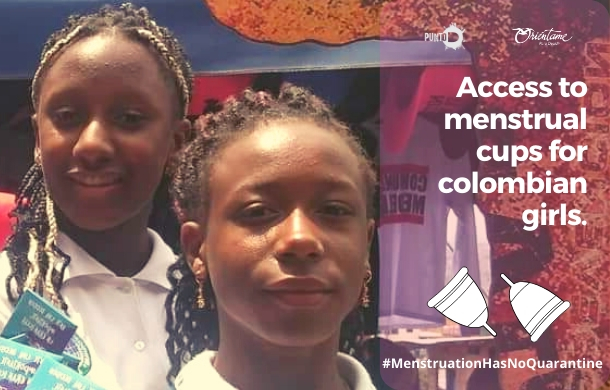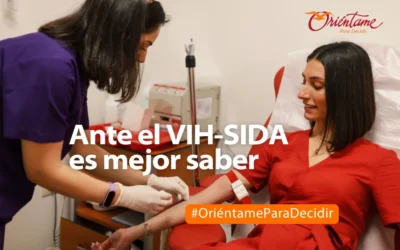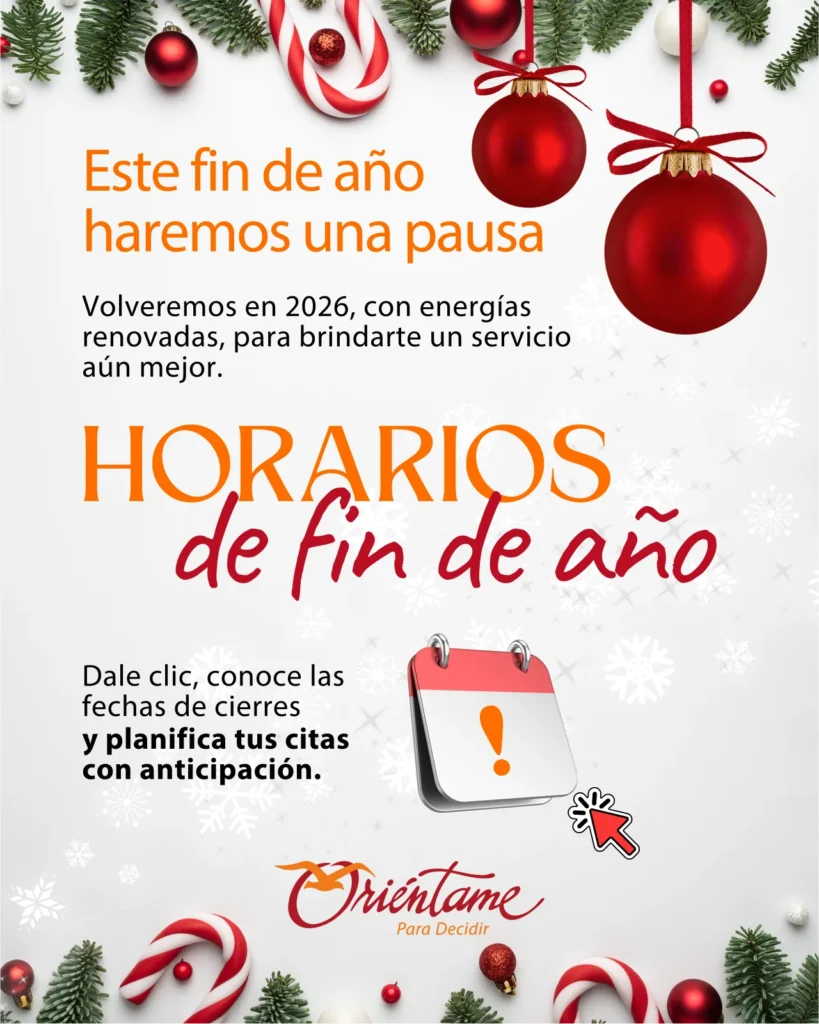Menstruation has no quarantine
Many women during the health emergency have struggled to access menstrual hygiene items, and it is not just a problem of shortages; the economic resources of a large part of the population have been reduced and severe in informal sectors, for example street vendors, manicurists, freelancers who are not yet allowed to restart their activities, and the list goes on.
Under these circumstances, social inequalities not only become more visible, but increases. The budget for the minimum subsistence does not always allow to include sanitary towels or tampons, but menstruation is not quarantined; women continue menstruating, cycles are altered, delayed, irregular bleeding that lasts longer than expected or appears more than once a month.
It is a silent drama that accompanies a large number of women because menstruation continues to be a topic that we prefer not to talk about; it is not a priority for anyone beyond the one who lives it.
If you are menstruating, go home….
According to UNICEF, 20% of grils in the Colombian Pacific consider menstrual blood to be dirty, and in addition, in most cases they do not have the resources to do hygienic management of it.
Meanwhile, stigmas and taboos related to menstruation make it difficult to manage menstrual hygiene properly, while feeding misconceptions and discriminatory self-care practices, which is why it is physically and emotionally more practical to stay home and not expose themselves.
Contributing to the autonomy of girls and women, by including alternative health supplies in their daily practices such as the menstrual cup, constitutes a way for the development of security and justice in sexual and reproductive rights.
The provision of safe menstrual cups and virtual training about its use is crucial to sensitize the community about the nature of menstruation. Better information allows naturalizing its management, ending myths and taboos, and gives tools to transform practices and customs that reinforce gender gaps, related to an event common to all women that will impact a third of the time of their life cycle.
Hence, these efforts focus on the young population, afro-descendant, indigenous, and irregular migrants, located in areas with the lowest rates of socio-economic development in Colombia, where difficulties in acquiring sanitary supplies reinforce the stigmas on the conception of femininity, undermine their dignity and reduce opportunities for equity.
The cup in me
It is made of surgical silicone, latex or surgical plastic, which guarantees that the body temperature is preserved and the risk of inflammatory or allergic reactions is reduced. It is basically a container that is inserted into the vaginal canal (like tampons) in which the blood is deposited, but it is not absorbed like in cotton products. It must be emptied according to the intensity of the bleeding.
Menstrual cup is not new! it exists more than a century ago. Its use has begun to become generalized for a few years, largely by feminist movements that found in it the possibility of claiming the relationship of women with their bodies and menstruation. There has also been a massive exposure on social networks of women recounting their experience, demonstrating how they have learned to use it, their fears, the most common difficulties that arise, and especially all the advantages it has.
One of the works with the greatest repercussion worldwide has been that of Diana Fabiánová (film director) who, together with Mona León Siminiani and Marion Doussot (screenwriters), created the documentary “La Luna en Ti” (2009) where myths are explored. The feeling of girls and teenagers about menstruation and the dichotomy they experience with a topic that can be painful, liberating, strange, intimate, and cause for celebration or concern at the same time.
Documentary “Monthlies: La luna en mi” by Diana Fabiánová
<< … in these stories the main character, the young woman, must overcome her fear of blood in order to become a woman and reach the biological and psychological maturity required to raise and give birth, and we exist thanks to this maturity: the menstruation. >>
Dusan Fabián, Psychologist
In 10 years a woman will use 2,600 sanitary towels or 1 menstrual cup
The menstrual cup is an efficient, economic and safe method of hygiene; friendly to the environment compared to traditional methods (sanitary napkins, tampons or improvised materials) that cause health problems for users, such as the toxic shock syndrome associated with the use of superabsorbent tampons.
It is estimated that a woman throughout her reproductive life can make use of about 13,000 to 15,000 towels or tampons that have components of cotton, plastics and chemical bleach. These figures demonstrate the high economic expenses of its use month by month, the impact it has been shown to have on long-term health and, of course, the ecological consequences of their use.
With these alarming figures, anyone cannot be indifferent to an issue with such a serious impact on life, health and sustainability. Our commitment to the sexual and reproductive health of girls and women in Colombia motivates us to start this campaign and invite girls and women to use of alternative methods that contribute to well-being during menstruation.
How to use the menstrual cup
Initially it is important to buy the right size cup. There are mainly two sizes: S for women under 30 years old or who do not have children yet and L for women over 30 years old or who have already had children. However, there are brands that offer three or four more specific sizes according to the stage of each woman.
Because it is made of flexible materials, it can be folded and that facilitates its insertion, after the cup is inserted, it opens inside the vagina creating a vacuum that prevents leaks. When removing it, it is important to break this vacuum by pressing the base of the glass with your fingers and pulling it out.
How often the cup should be emptied will depend on the amount of bleeding and here it is very important to be aware of how menstruation behaves in each case. In general, women tend to have strong bleeding on the first or second day and will need to empty it every 4 to 6 hours. It can last longer on the following days.
Cleaning it is simpler than you might think. Although this may be a topic of concern at first, practice will help to overcome it without any problem. The cup should be sterilized before each menstruation, but a wash is not required every time it is emptied. If you have access to a sink you can clean it only with water since the use of soaps is not recommended. Another alternative is to take a water bottle to the toilet that makes cleaning easier when emptying it.
What can be concluded in general, is that there is an essential requirement to use the cup and it is self-knowledge. It is very important to know how the female reproductive system works and of course explore its anatomy, keep in mind that there is a learning stage that can be uncomfortable for some, but as patients it is possible to overcome it,. In case of discomfort, pain or leaks, inform anybody could inform about the causes.
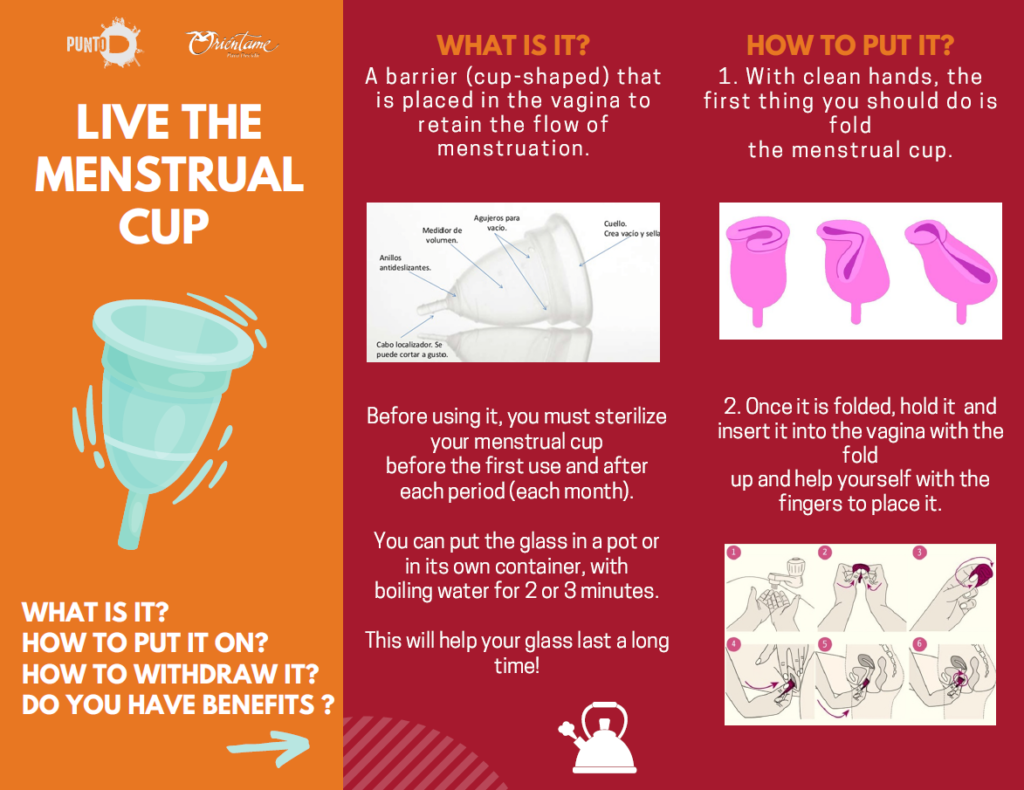

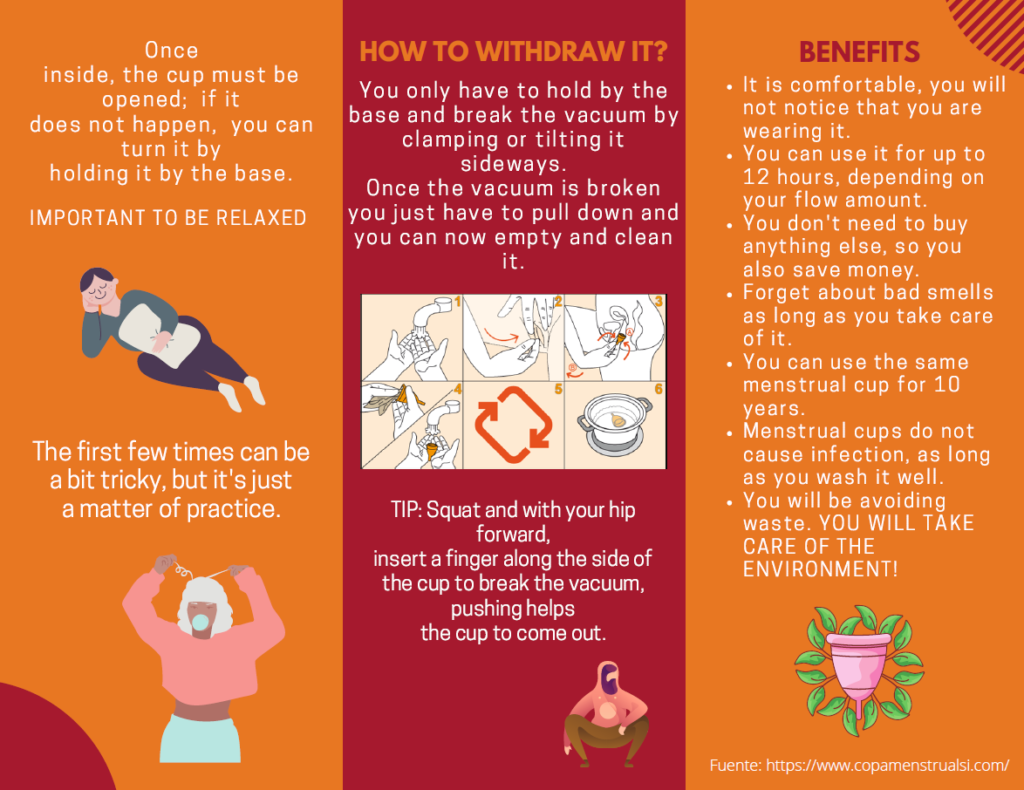

More resources on menstrual hygiene
- La menstruación: desmontando el último tabú femenino, Karen Houppert, 2000.
- Desafíos de la menstruación en niñas y adolescentes de comunidades rurales del pacífico colombiano.Liany K. Ariza-Ruiz, María J. Espinosa-Menéndez, Jorge M. Rodríguez-Hernández, Rev. Salud Pública. 19 (6): 833-841, 2017.
- CARTILLA Higiene menstrual en niñas de escuelas rurales del Pacífico Colombiano, UNICEF, 2017.
- Puberty Education & Menstrual Hygiene ManagemenUNESCO, 2014.
- Menstruapedia comic, Guía para niñas sobre el periodo menstrual.
- El Tabú de la menstruaciónpor Diana Fabianova en TEDxBratislava 2013.
- Una manera libre de tabú para hablar del periodopor Aditi Gupta en TEDxGatewayWomen.
- Síndrome de choque tóxico, Clínica Mayo. Consultado en 2 junio de 2020
- La colombiana que ‘hackeó’ la toalla higiénica para cambiar la vida de las niñas en ÁfricaCNN, 2016.
- Lammily la muneca antibarbie que tiene acne y celulitis ahora le llega el periodoCNN, 2015.
Tags: Derechos reproductivos Enfoque de género Higiene mestrual Salud reproductiva
También te puede Interesar
Prohibición del matrimonio infantil, un logro del 2025
La prohibición del matrimonio infantil y las uniones tempranas en Colombia, que deja la aprobación de la Ley 2447, es tal vez el logro más significativo para los derechos sexuales y reproductivos en Colombia presentado durante 2026. Más que una reforma legal, es un...
Mejores anticonceptivos para 2026
Contar con un método anticonceptivo adecuado durante un año permite a las personas decidir si desean o no un embarazo, en qué momento de su vida y bajo qué condiciones. Al tener información confiable puedes decidir libremente y con seguridad cuál es la mejor opción...
Ante el VIH-SIDA es mejor saber
Cada 1 de diciembre, el mundo recuerda una de las luchas en salud pública más significativas de las últimas décadas: la respuesta global al VIH-SIDA. Esta conmemoración busca visibilizar la realidad de millones de personas, promover la prevención, defender los...
